- Home
- Tim Lebbon
Ten-Word Tragedies
Ten-Word Tragedies Read online
TEN-WORD TRAGEDIES
Edited by Christopher Golden & Tim Lebbon
Nineteen Stories Inspired by one Frank Turner song
FOREWORD
CHRISTOPHER GOLDEN
IT ALL STARTED WITH ELLIE LEBBON. One day Tim heard a bit of gentle piano music issuing from his daughter’s room, and a gentleman singing in a very English voice about listening to his music on a portable stereo. Tim stuck his head in the door and frowned. Ellie knew her father’s musical tastes well and told him to wait a minute, and then, with a “Hi ho, hi ho, hi ho…” Frank launched into “Four Simple Words,” and Tim’s love of his music was born.
Sometime later, Chris posted on Facebook about being in desperate need of new music. He’d been going through a difficult time and wanted a lift. Lots of people chimed in on that post, but it was mutual friend Matt Bechtel (who has a story in this anthology) and Tim who insisted Chris give Frank’s latest album, Positive Songs for Negative People, a try.
The album was the cure for what had been ailing him.
In November, 2015, Chris reached out to Frank to express his gratitude for the balm his music had provided, which led to Frank inviting him to a show the following month at a club called Fete in Providence, Rhode Island, where they met for the first time. If you’ve never been to a live Frank Turner show, do yourselves a favor and remedy that as soon as possible. The live shows are a party. A gathering of friends, all centered around the songwriting skills of Frank Turner.
Chis and Tim both loved his lyrics, which led one day to a conversation about the opening verse of “Mittens.”
Wandering lonely through the snow streets of New York,
I stumbled on a thrift store that sold postcards by the yard.
I bought a mile and shipped them home so I could read
Ten thousand ten-word tragedies, the lives these strangers lead.
As writers, they were both fascinated by Frank’s ability to paint an entire story just in those few lines about discovering all those old postcards for sale in a New York City thrift shop. The idea that as a songwriter he would buy a box of them and ship it home for later inspiration stuck with the guys, and later, when Frank told them it was a true story, that ignited the idea that led to the book you hold in your hands. Wouldn’t it be fascinating, they thought, to create an anthology of stories inspired by those very same postcards?
With Frank’s blessing, they reached out to an extraordinary array of authors who shared their enthusiasm for the music, and for this concept. Frank sent Tim a box of postcards, from which Tim selected some of the most intriguing. Each author was sent three postcards and asked to choose one as inspiration for a short story, with no limitation as to genre. They could write anything they liked, as long as they used one of those postcards as their springboard. The results, as you’ll soon see, are stellar, including Frank’s brilliant fiction debut, “Royal Gorge,” which closes this volume.
Now, imagine yourself wandering alone through the snowy streets of New York. You stumble into a thrift shop, mostly to get warm. There’s music playing inside, gentle piano that’s about to launch into a thumping punk rhythm, and you lay your hands on this book…
And you open it.
I AM HERE
MICHAEL MARSHALL SMITH
MANY THINGS HAPPEN WHEN SOMEONE DIES. There are the obvious ones, the pressing concerns, actions that must be immediately undertaken even if the death happened at home and was not unexpected. You phone the hospice nurse, who arrives at the house an hour later. You stand there in a room that now seems all corners and shadows while she confirms that yes, regretfully your mother is genuinely dead, and the cause of death will be recorded as organ failure caused by multiple advanced cancers. The nurse is kind but businesslike and helps arrange transportation to the mortuary.
Over the next few days you make arrangements for the funeral. You contact people to let them know where to come, and when. You make decisions over flowers and catering, and concoct an Order of Service in accordance with what you believe she would have wanted, and meanwhile empty the fridge in her house and water her plants and obtain a death certificate. There will be times during this process when you cry savagely. The rest of this period will be spent on numb, efficient auto-pilot, at times accepting the help and support of your husband and daughter, and assisting with their own grieving processes, at others wondering who these other people are and why they are in your house.
Eventually you will attend the funeral and say a few words and shake hands and accept hugs and later tip uneaten egg salad sandwiches and potato chips into a refuse bag and tie it neatly and put it in the trash and stand in the twilight afterward feeling worn out and faded and terribly unhappy but also guiltily relieved. The first part is over. The next part begins.
The part that lasts the rest of your life.
Clothes. Some that you have seen a great deal in the last year, the comfortable ones in which your mother spent her final months, but which you now hate because they say nothing about her life except that it ended. Others in the closet are more meaningful, and thus hurt more—the outfits she used to wear before she got sick, the ones that seem more like her.
And then more, hidden to the sides, not worn for years but kept out of sentiment. The smart suit she wore to your graduation. Sundresses from the 1970s.
And there, on a hanger right in the back, a tiny sweater that was not hers, but yours. Kept all these years because it reminded her of when you were her little girl.
Every culture has, consciously or otherwise, developed methods of helping people get over the immediate trauma of loss, and the sad fact is that the most effective of these is boredom.
There’s a lot of pretty tedious stuff to do, from closing bank accounts to talking to lawyers and dealing with social security and the utilities people and writing letters and emails and making phone calls during which you’re inevitably put on hold for long periods listening to music that you would not otherwise voluntarily endure. Via these tasks and their frustrations you are dragged slowly back into the mundane routines and rhythms of everyday life, hour by hour, day by day, while the soul’s white blood cells plod around the psyche, repairing the breach, scarring over the damage done.
Three weeks after her mother’s death, Monica got up one morning knowing she’d reached the end of all this. That everybody had been told, everything had been done, except the final part. Today’s business. She waved her husband off to work and made Madison’s lunch and drove her to school and then drove back to the neighborhood to tackle the small rented apartment in which her mother had ended her years.
She parked in the street as she had so many times in the last decade, aware as she looked across at the front door while locking the car that, for the first time, she was no longer expecting to encounter her mother when she walked in. Not in body, anyhow. Monica hadn’t cried in two days and wanted to keep it that way, so she gently pushed down on the realization and walked up the path with an armful of flat-packed cardboard boxes and a pack of refuse sacks.
Minutes later she was in the tiny kitchen, leaning on the counter and bawling her eyes out, knowing that the last thing is the worst thing, and that it is breaking the web apart.
Furniture. A few heavy pieces of oak, passed down from Margaret’s mother, Mary, including some that were a legacy of her mother in turn, Monica’s great-grandmother May.
A tiled coffee table, white and orange and purple, that Monica had loved as a child, abhorred in her teens and twenties, and then come to appreciate as a piece of retro design—not just good, but possibly even semi-valuable.
Other, less substantial items, like the cheap side-table by the chair in the middle of the room, bought for t
he sickness months, somewhere handy to put cups of tea and the endless pots of pills and drugs, along with cards cheerfully wishing that Margaret would get well soon, even though both the receiver and senders knew this was a triumph of hope over the evidence.
The picture on the wall, a large and faded framed photograph of a mountain range in Montana, something that had been up on the wall of wherever her mother had lived for as long as Monica could remember.
The double bed which nearly filled the small bedroom. The bed in which Monica had been conceived, and still remembered clambering onto so many long ago Christmas mornings, eager to show her mother and father what Santa had brought.
And her father exclaiming over every single item, as if he’d had no idea.
As she stood in the living room with a cup of mint tea—her mother had drunk the stuff morning, noon and night, but there were only two bags left in the box now, a fact that was both convenient and miserable—Monica looked around and took stock and acknowledged that the extent of the day’s task could be a lot worse.
She remembered her mother talking about this, in fact: noting how you started your life in a small room, without many things—each of them distinctive and precious and looming very large in your small, nascent life. Over the following decades the places where you lived became larger, and larger, and progressively filled with more and more stuff, some of it current but some of it merely taking up space, like the garage full of old bikes and toys and snowshoes. A few years after Monica went to college her parents sold her childhood home and moved into something more compact, where they were happy for many years. And then, when her dad died, her mother sold that too (transferring the proceeds to her daughter via various ingenious but accountant-sanctioned means) and moved into this tiny and convenient apartment.
Each of these stages necessitated the jettisoning of significant numbers of objects, and Monica’s mother had sanguinely remarked upon how you came full circle in life: starting off with little, somewhere small, then expanding, before gradually returning to the original arrangement. Heading back toward that first and smallest of homes, the womb. Before the cancer took hold she’d been busily consolidating further, passing things on to her daughter or grand-daughter, selling a few pieces, consigning others to Goodwill.
So there wasn’t as much left as there could have been, if Monica’s mother had been more of a hoarder. But nonetheless many things remained, on shelves and in drawers and closets, and Monica now had to work out what to do with them.
Books. Her mother had always been an avid reader, though in the last months she’d seemed to lose interest, as if feeling she already had enough information and made-up stories no longer seemed worth the time. The house Monica grew up in had been full of books, but they take up a lot of space, and what’s the point of having them on the shelves if you’re not going to read them again? The few that made it to her mother’s last house were a strange and uneven synopsis of her mother’s reading habits:
A few hardback crime novels. A couple of guidebooks to American states or European countries, now so out of date as to be actively misleading. Seminal non-fiction from decades gone by, like All The President’s Men, Gail Sheehy’s Passages and a couple of Joan Didion collections.
A pair of catalogues from art exhibitions in the early 1980s. The pages are gray and the art looks odd. One is signed by the artist: ‘To Margaret—enjoy!’ Kept because her mother liked the pictures, or because they were memorable evenings? Monica never asked. You don’t, while there’s still time.
All these items, all these things. And what had done for Monica when she walked in the house was the realisation that they were about to be disconnected from one another. By her. That she was going to break their web.
Right now, they remained in the same place, and were joined by all having once belonged to the same person. But once that was removed, then this conjoined collection, this manifestation of a life, would break up into unrelated things. With the possible exception of the tiled coffee table and a few pieces of jewelry—though most had already been passed on to her daughter and granddaughter—nothing here was worth more than thirty bucks. Once you removed them from this place, and without Margaret to explain them, to provide their nexus, it was just bric-a-brac. Some of it, barely that.
Every book Monica took off the shelf and put into a box brought the collection closer to dissolution. Even the things she was going to keep, some dresses and other bits and pieces (and she saved one of the art catalogues on a whim, along with the guidebook to Montana, because it had been her mother’s favorite place in the world) did the same. Once they were back in the house she shared with her husband and child, they’d be part of her web of the inanimate: a group of things that made sense because of Monica, not Margaret. Even by keeping things she was breaking them apart, and every act of triage felt like she was blowing the remaining dust of her mother’s existence away. But what else could she do?
What the heck was she supposed to do about all this, for example? She had the top drawer of the bureau out and on the table. It was the last major thing she had to deal with. The shelves and closets had been cleared, the entire kitchen, all the other drawers.
The drawer was half-full of, well, junk. Of course not actually junk. Every single thing had been picked up, owned by, her mother. It meant something because of that. But functionally…it was junk.
Some loose change. A cork: something had been written on the side, presumably a date, but it had faded beyond legibility. Quite a lot of buttons, some fancy. Three tiny sewing kits of the kind they provide in good hotels. A battered and very dated map of downtown Missoula, Montana. A small metal statue of a deer, missing a hind leg. An almost empty box of paperclips. Various yellowed and curling receipts. Two pieces of heavily-tarnished costume jewelry. An old, empty cigarette lighter: Monica’s mother had smoked throughout her early life, then stoically given up during Monica’s teens, though still allowing herself one once in a very great while, on special occasions, either good or bad. A broken pair of sunglasses. Twenty or thirty additional objects, of about the same approximate worthlessness.
Why were they here? Monica’s mother was not sentimental. And yet these things were still present in her life, or this dying echo of it. None of it would even find a place in a self-respecting thrift store. But each was part of something—or would be, until Monica broke their web.
As she moved her hands through all the stuff, working up the resolve to upend it into the refuse sack, Monica’s fingers came upon a postcard. She pulled it out.
The front showed a shot along a wide, downtown street, the two sides kept apart by a diagonal wedge of cloudy blue sky. The buildings were mainly low, two stories, apart from one on the front right corner, which had four. A few business signs that looked 1940s or 50s from their design, including one for a drug store. Some very retro-looking cars driving up and down.
It had the overall effect that old postcards do, of making somewhere commonplace look exotic and strange. You were saved from having to guess where this might be by the fact that ‘Laramie Wyoming’ had been emblazoned across the top in a flouncy red typeface. Someone had written ‘Our best hotel’ in blue biro, with a scratchy arrow pointing to the tallest building.
Turning it over, Monica saw a description and explanation of the view, printed at the top left:
LARAMIE, WYOMING
On U. S. Hiway 30 Pop. 15,581
3rd St. Looking North
‘GATEWAY TO THE SNOWY RANGE’
Other than the presumably of-its-time spelling of ‘highway’, this was of little initial interest. Underneath was a handwritten message, which said, in its entirety:
I work on 2nd Street. I don’t know why we have no picture of 2nd street when it is our main street for stores.
Slightly curious was the fact that there was no address on the right-hand side. No stamp, either. But the thing that caught her eye was the name under the message.
May
It was there by itsel
f, in old-fashioned script, with a larger-than-contemporary leading curlicue on the ‘M’. No ‘love’ or ‘best wishes’ or ‘see you soon’. Just the name, but it was a name that meant something to Monica.
Nobody knew when or why it had started, but the females in her family had a tradition of calling the eldest daughter by a name beginning with ‘M’. In Monica and her daughter Madison’s case, they had been the only daughter, and only child. In fact, that had been true for Monica’s mother Margaret, too. Her mother—Monica’s grandmother—had been called ‘Mary’. And her mother in turn…had been called ‘May’.
Monica frowned at the postcard. Had it been written by her great-grandmother? That would explain its presence in her mother’s drawer. But if she’d written it, then to whom?
And why had it never been sent? Not only the lack of stamp and address but also the undamaged corners and edges of the card strongly suggested that it had never undergone the rigors of the US Mail system.
And something else. Monica flipped the card over and looked at the picture again. When did they start doing color postcards of photographs? She didn’t know. The signage on the buildings, and the cars, looked old. But as the stuff in her mother’s old house showed, you couldn’t date a place by its contents alone. Objects don’t only inhabit the year of their creation. They can stick around for a long time. Like people.
She looked at the back once more. Maybe there was a way of guessing a rough date through the spelling of ‘Hiway’. It wouldn’t be more than a rough estimate, however. There would be regional variations, and it could be that the company that produced the card (a firm or individual called ‘H.C. Hilton’, according to a line of small print running vertically between the message and address areas) had printed the same card for years and years without bothering to update the word.

 Ten-Word Tragedies
Ten-Word Tragedies Predator: Incursion
Predator: Incursion Relics--The Edge
Relics--The Edge Firefly
Firefly Face
Face Generations
Generations RIME (Kindle Single)
RIME (Kindle Single)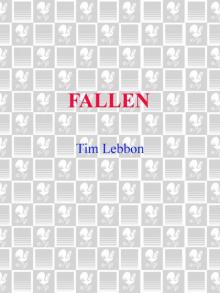 Fallen
Fallen London Eye tc-1
London Eye tc-1 Kong: Skull Island
Kong: Skull Island Dawn n-2
Dawn n-2 Into the Void: Star Wars (Dawn of the Jedi)
Into the Void: Star Wars (Dawn of the Jedi) The Everlasting
The Everlasting London Eye: 1 (Toxic City)
London Eye: 1 (Toxic City) Dusk: a dark fantasy novel (A Noreela novel)
Dusk: a dark fantasy novel (A Noreela novel) Coldbrook
Coldbrook Alien
Alien Dusk
Dusk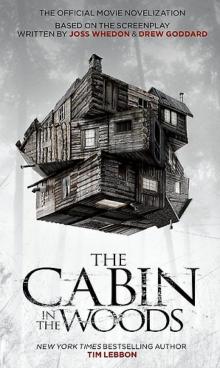 The Cabin in the Woods
The Cabin in the Woods The Heretic Land
The Heretic Land Relics
Relics The Nature of Balance
The Nature of Balance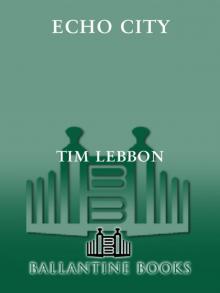 Echo City
Echo City Tim Lebbon - Fears Unnamed
Tim Lebbon - Fears Unnamed Naming of Parts
Naming of Parts Alien--Invasion
Alien--Invasion Vale of Blood Roses
Vale of Blood Roses Berserk
Berserk Coldbrook (Hammer)
Coldbrook (Hammer) Contagion tc-3
Contagion tc-3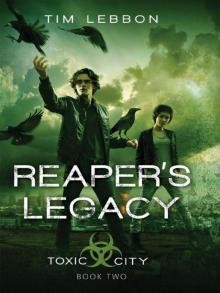 Reaper's Legacy: Book Two (Toxic City)
Reaper's Legacy: Book Two (Toxic City) Desolation
Desolation Unnatural Selection
Unnatural Selection Predator - Incursion
Predator - Incursion London Eye
London Eye Contagion (Toxic City Book Three)
Contagion (Toxic City Book Three) The Silence
The Silence The Thief of Broken Toys
The Thief of Broken Toys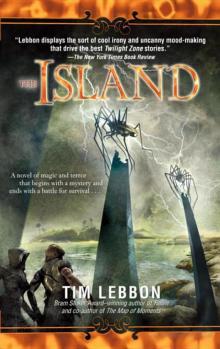 Tales of Noreela 04: The Island
Tales of Noreela 04: The Island Dusk n-1
Dusk n-1 White and Other Tales of Ruin
White and Other Tales of Ruin A Whisper of Southern Lights
A Whisper of Southern Lights Until She Sleeps
Until She Sleeps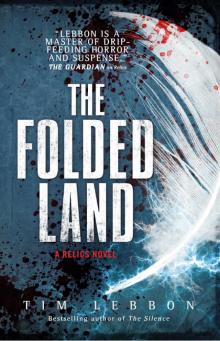 Relics--The Folded Land
Relics--The Folded Land Reaper's Legacy tc-2
Reaper's Legacy tc-2 Alien: Out of the Shadows
Alien: Out of the Shadows Pieces of Hate
Pieces of Hate X-Files: Trust No One
X-Files: Trust No One Bar None
Bar None The Fire Wolves
The Fire Wolves